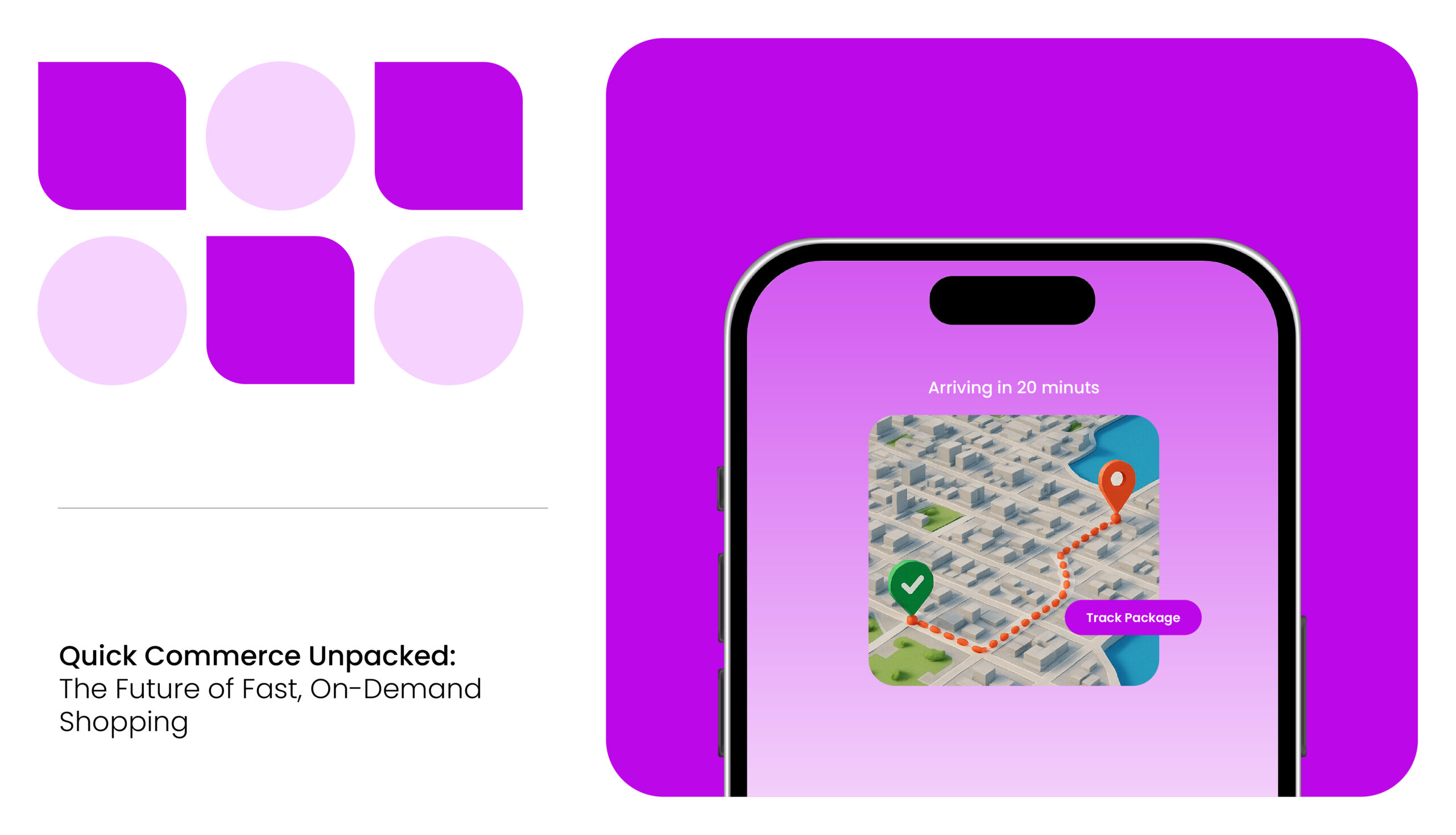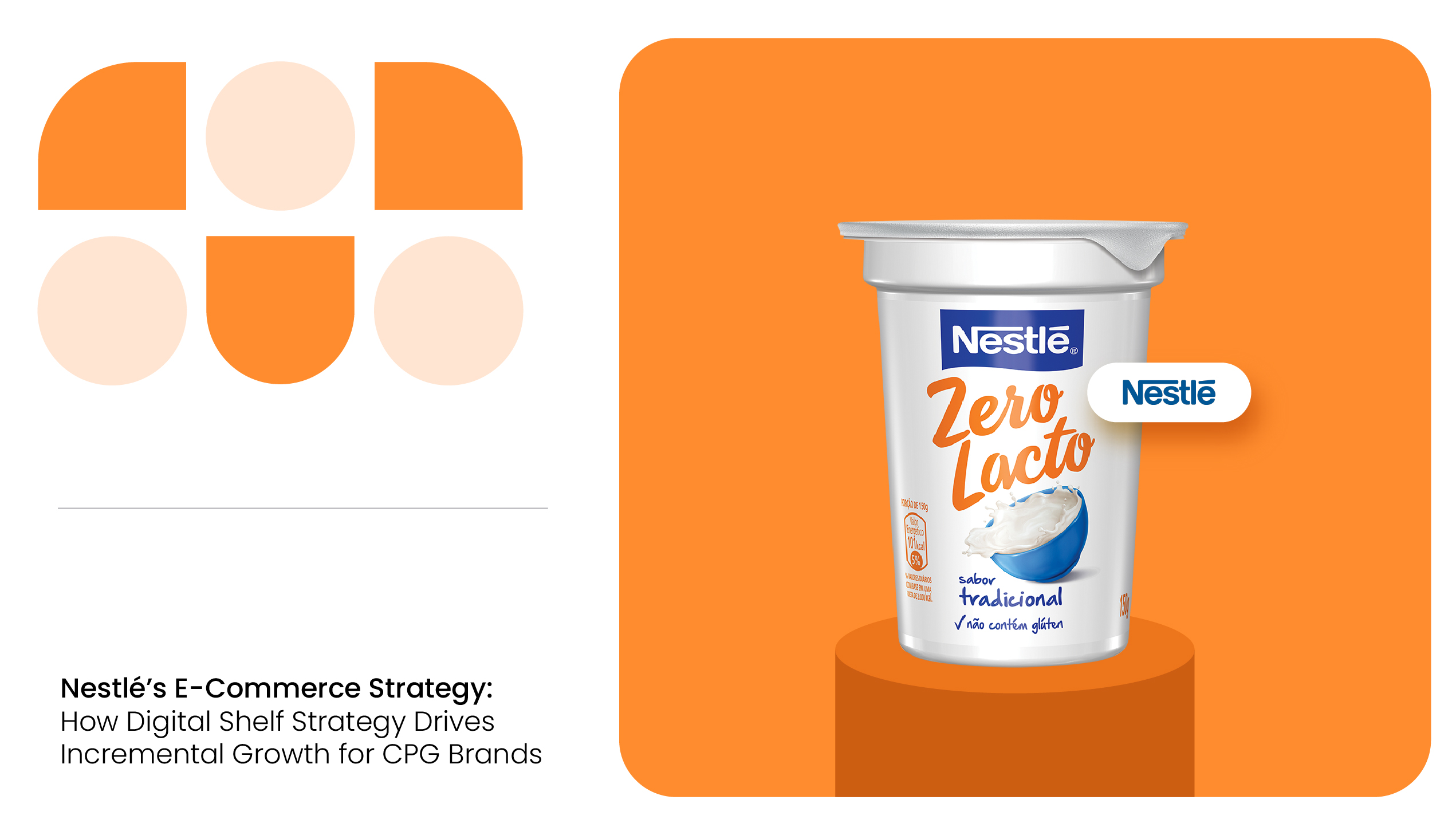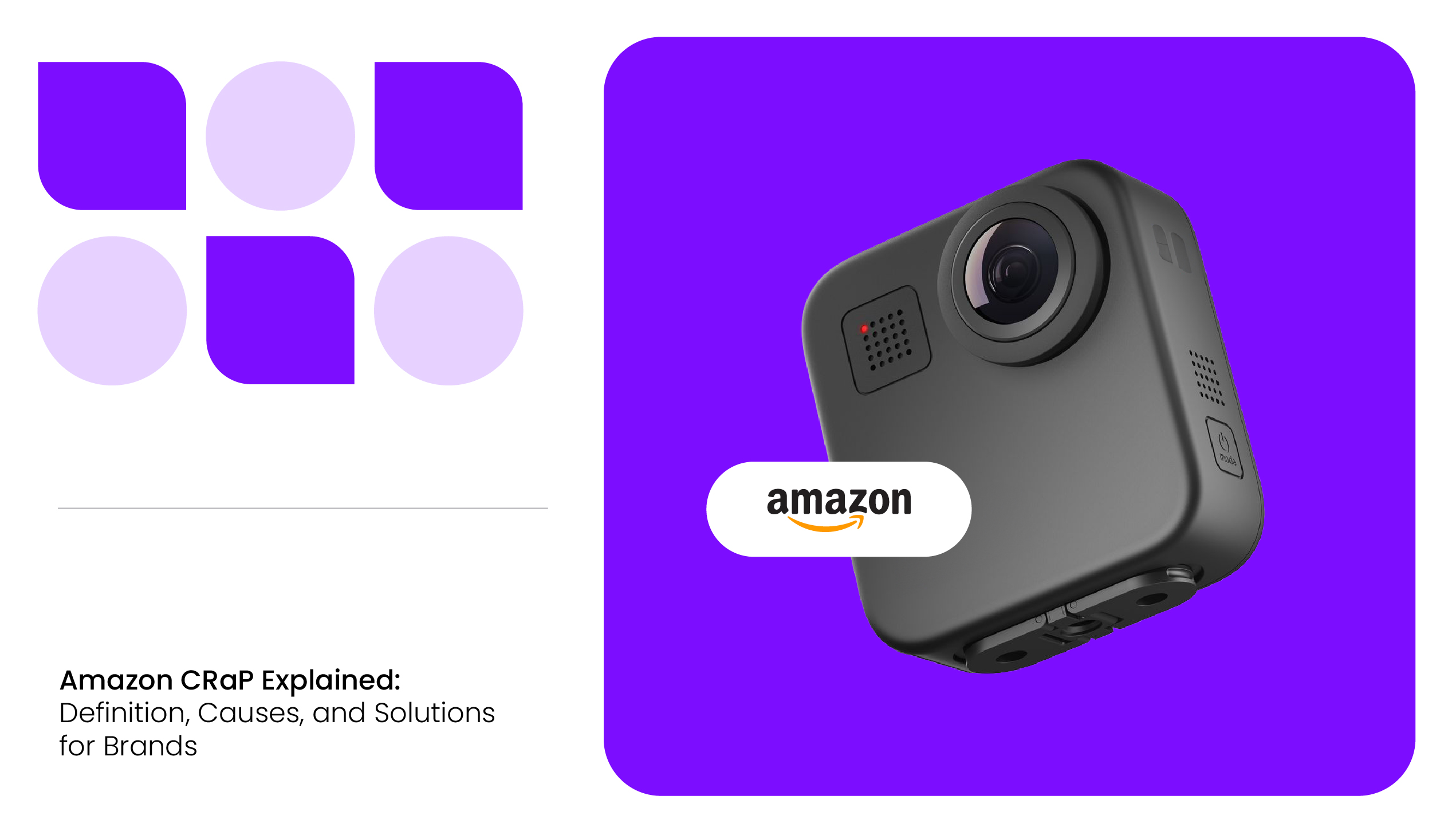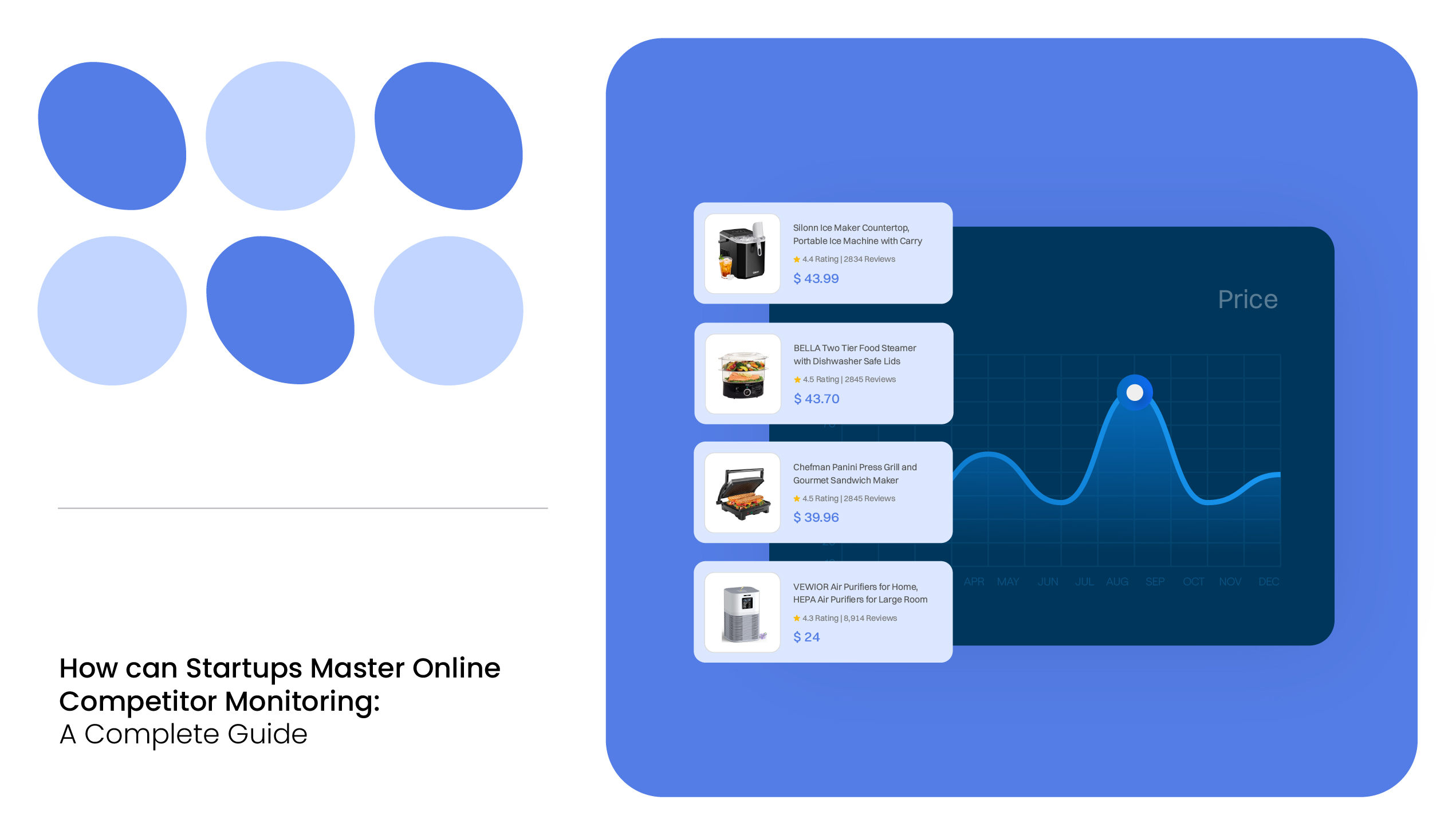In recent years, e-commerce has evolved from traditional online shopping to more innovative, customer-centric models. One of the most exciting developments in this space is quick commerce (Q-Commerce), a concept that is reshaping how consumers shop online. It is expected to grow its user base by 40-45% in the next three years.
But what is quick commerce, and why is it gaining so much attention? It’s gaining attention because consumers crave instant gratification, and brands that can meet this demand are revolutionizing the online shopping experience. Impulse buying for retailers is also a primary avenue for making quick sales.
For quick commerce brands trying to stay ahead, MetricsCart is a game-changer. It helps you optimize your SKUs, keep an eye on price changes in real-time, and manage inventory more effectively, all based on data that enables you to make smarter, quicker decisions in this fast-paced space.
What Is Quick Commerce?
Quick commerce, often abbreviated as Q-commerce, refers to the ultra-fast delivery model within the e-commerce industry that focuses on delivering products to customers within 30 minutes or less. This model is typically used for essentials such as groceries, household items, and snacks, although it is expanding to other product categories.
Unlike traditional e-commerce, where delivery can take a few days or even weeks, Q-commerce prioritizes speed and convenience, enabling customers to receive their products within half an hour or less. This has become particularly popular in urban areas where consumers expect on-demand services at their fingertips.
Quick commerce in India is primarily driven by younger, tech-savvy consumers, with the 18–24 age group being the most active on platforms such as Blinkit, Swiggy Instamart, and Zepto.
Millennials aged 25–34 also comprise a significant portion of users, valuing the time-saving benefits of Q-commerce. While the 18–24 group leads in usage, the 25–34 group tends to spend more per order, balancing frequency with higher-value transactions.
READ MORE | Interested to know the top quick commerce players in the US? Check out our blog on How Quick Commerce is Evolving: 10 Key Players in 2025.
Key Features of Quick Commerce
As quick commerce continues to disrupt the e-commerce landscape, businesses need to adopt effective quick commerce growth strategies to stay ahead of the curve. At the core of this model are several key features that make it a game-changer for both consumers and brands.
Some of the main features of quick commerce are:
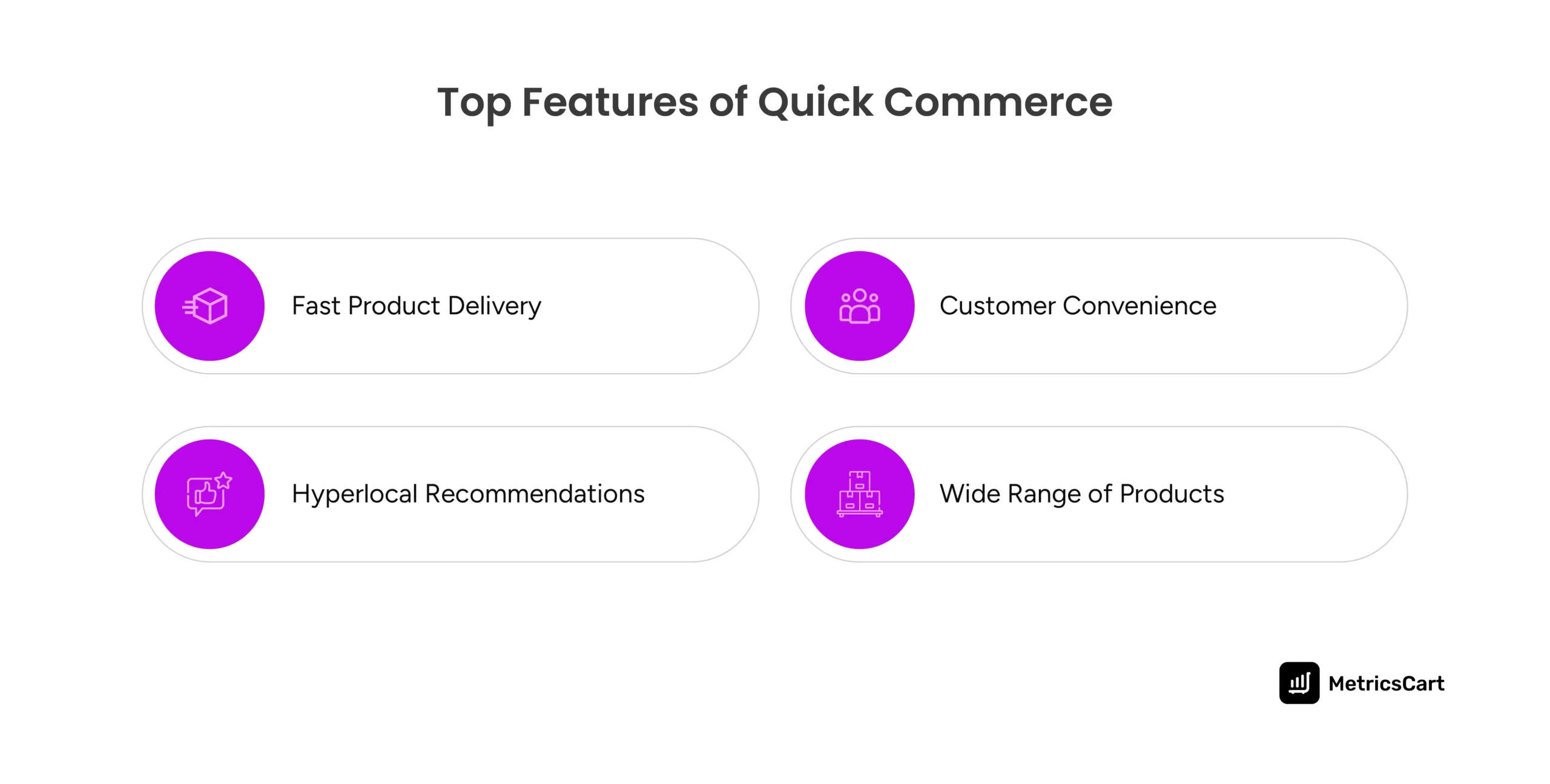
Speedy Delivery
The hallmark of Q-commerce is rapid delivery. Customers can expect their orders to arrive within 30 minutes or less of placing an order, making it an ideal option for urgent needs or spontaneous purchases.
Hyperlocal Fulfillment
To achieve quick delivery times, Q-commerce relies on a network of local fulfillment centers, also known as dark stores. These facilities are strategically located in densely populated areas, allowing for faster order fulfillment and minimizing delivery distances.
Customer Convenience
One of the key drivers of Q-commerce’s popularity is the sheer convenience it offers. Customers no longer need to plan their purchases days before. They can simply order what they need and have it delivered almost immediately, which aligns perfectly with today’s on-demand culture.
Wide Range of Products
While Q-commerce is most closely associated with groceries and essentials, the model is expanding into other categories, including electronics, beauty products, pharmaceuticals, jewelry and even clothing. This breadth of product selection enhances the convenience and versatility of the service.
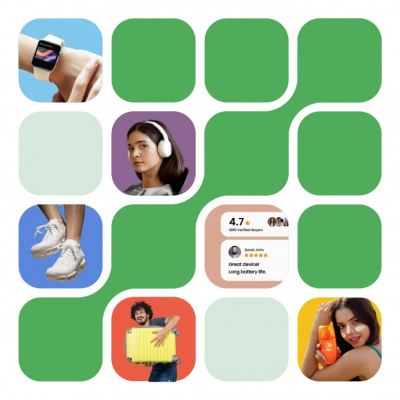
How Quick Commerce Works
Quick commerce operates on a relatively simple model that combines advanced logistics, real-time data, and a network of fulfillment centers. Here’s how it typically works:
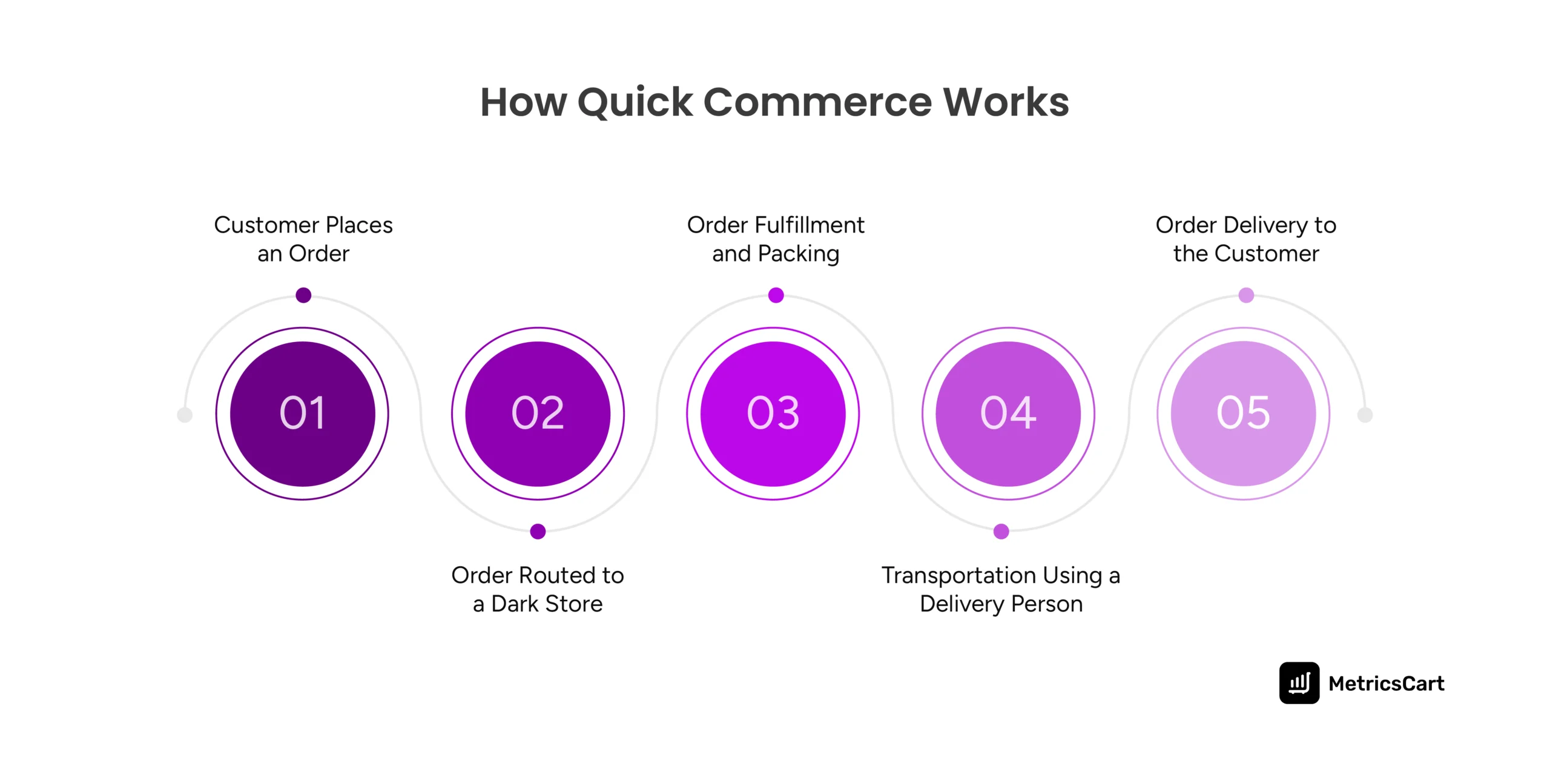
1. Customer Places an Order
The customer uses a quick commerce platform (often an app) to place an order for their desired products. These platforms are designed for ease of use, often featuring personalized recommendations based on previous purchases.
2. Order Routed to a Dark Store
Once the order is placed, it is routed to a nearby dark store, which is essentially a fulfillment center that isn’t open to the public. These dark stores are equipped with all the products available for delivery and are strategically located to minimize delivery times.
3. Order Fulfillment and Packing
Staff at the dark store quickly pick and pack the items. The use of automation and smart inventory systems helps streamline this process, allowing for rapid order processing.
4. Transportation Using a Delivery Person
Once the order is packed, it is handed over to a delivery person, often using bikes or electric vehicles, depending on the urban infrastructure. These individuals deliver the products to the customer’s doorstep within the promised delivery window.
5. Order Delivery to the Customer
The customer receives their order, typically within 30 minutes, making quick commerce one of the fastest-growing models in e-commerce.
READ MORE | How does Zepto’s quick commerce model operate? Check out our blog on Inside Zepto’s Business Model: Breaking Down India’s Fastest Growing Quick Commerce Brand.
The Future of Quick Commerce
As demand for faster deliveries continues to rise, quick commerce is likely to play a larger role in shaping the future of e-commerce. Innovations such as autonomous delivery vehicles and AI-driven inventory management can reduce operational costs and enhance service efficiency.
In the coming years, we can expect the following trends:
Expansion into New Markets
Q-commerce is likely to continue growing, expanding beyond major metro, tier-1, and tier-2 cities across the country.
Increased Investment in Technology
Companies will invest more in automated delivery solutions, drones, and AI-powered logistics to keep pace with demand and cut costs.
Sustainability Initiatives
As the environmental impact becomes a bigger concern, companies will focus on sustainable delivery methods to align with consumer demand for eco-friendly practices.
Consolidation in the Market
As the market matures, smaller quick commerce players may be acquired by larger companies, leading to consolidation and fewer, more dominant players.
READ MORE | Want to know more about the most popular quick commerce player in India? Check out our blog on How Blinkit Works: Understanding Its Business and Delivery Model.
Conclusion
Quick commerce is changing the way we shop by delivering everyday products faster than ever before. Although it’s still in its early stages, the model has already had a significant impact, particularly in urban areas.
With the right technology and investment, quick commerce has the power to completely reshape online shopping, offering customers the speed, convenience, and personalization they have come to expect.
For e-commerce businesses, jumping on board with this shift is crucial to staying ahead in a world where customers expect everything on-demand.
With MetricsCart, brands can make smarter decisions by leveraging data and insights to optimize their quick commerce business success and stay at the forefront of this rapidly evolving space.
Unlock the Power of Quick Commerce for Your Business With Real-Time Insights
FAQs
Q-Commerce brands can optimize SKU management by tracking real-time product performance, identifying high-demand items, and streamlining inventory to avoid stockouts. Using data insights, brands can ensure fast order fulfillment and reduce operational delays.
Pricing in Q-Commerce is challenging due to the need to remain competitive while maintaining healthy margins. Brands must frequently adjust prices based on real-time market trends, competitor prices, and fluctuating demand for products.
Data plays a crucial role by offering insights into customer preferences, inventory levels, and purchasing behavior. Brands that utilize data to optimize pricing, promotions, and inventory management can enhance customer satisfaction and increase sales efficiency.
Retaining customers in Q-commerce involves offering personalized experiences, providing real-time tracking, utilizing loyalty programs, and delivering consistent value through fast and reliable service, as well as exclusive offers.
Local fulfillment centers, or dark stores, play a vital role in reducing delivery times by positioning inventory closer to customers. This allows Q-Commerce brands to fulfill orders quickly, often within 30 minutes, and enhance the customer experience.

